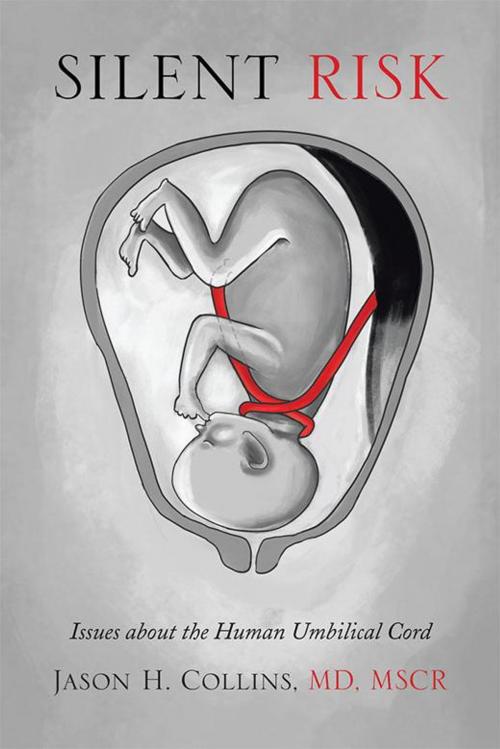Silent Risk
Issues About the Human Umbilical Cord (Second Edition)
Nonfiction, Health & Well Being, Medical, Specialties, Gynecology & Obstetrics| Author: | Jason H. Collins MD MSCR | ISBN: | 9781499039092 |
| Publisher: | Xlibris US | Publication: | July 2, 2014 |
| Imprint: | Xlibris US | Language: | English |
| Author: | Jason H. Collins MD MSCR |
| ISBN: | 9781499039092 |
| Publisher: | Xlibris US |
| Publication: | July 2, 2014 |
| Imprint: | Xlibris US |
| Language: | English |
With an estimated 8,000 deaths per year in the United States from complications of UCA, an initial goal of 50% reduction of loss is possible. To achieve this goal requires the recognition by the obstetrical community of the issue. Recent research into circadian rhythms may help explain why UCA stillbirth is an event between 2:00 a.m. and 4:00 a.m. Melatonin has been described as stimulating uterine contractions through the M2 receptor. Melatonin secretion from the pineal gland begins around 10:00 p.m. and peaks to 60 pg at 3:00 a.m. Serum levels decline to below 10 pg by 6:00 a.m. Uterine stimulation intensifies during maternal sleep, which can be overwhelming to a compromised fetus, especially one experiencing intermittent umbilical cord compression due to UCA.
It is now time for the focus to be on screening for UCA, managing UCA prenatally, and delivery of the baby in distress defined by the American College of Obstetricians and Gynecologists as a heart rate of 90 beats per minute for 1 minute on a recorded nonstress test. The ability of ultrasound and magnetic resonance imaging (MRI) to visualize UCA is well documented. The 18-20 week ultrasound review should include the umbilical cord, its characteristics, and description of its placental and fetal attachment.
Bettye Wilson, MEd, R.T.(R)(CT), RDMS, FASRT Fellow of The American Society of Radiologic Technologist recommended in RADIOLOGIC TECHNOLOGY March/April 2008, Vol. 79/No. 4 pg 333S-345S
That an umbilical cord evaluation with sonography should include the appearance, composition, location, and size (and length) of the cord.
In addition:
Abnormal Insertion (in the placenta and fetus)
Vasa Previa
Abnormal composition (single umbilical artery)
Cysts, Masses Hematoma
Umbilical Cord Thrombosis
Coiling (helices), collapse, knotting and prolapsed (funic presentation)
Cord Events: Although many stillbirths are attributed to a cord accident, this diagnosis should be made with caution. Cord abnormalities, including a Nuchal Cord, are found in approximately 30% of normal births and may be an incidental finding. (American College of Obstetrics and Gynecology Practice Bulletin 2009)
According to NICHD's recent stillbirth study, UCA is a significant cause of mortality (10%). This finding is in agreement with other international UCA studies. (Bukowski et al. 2011)
These histologic criteria identify cases of cord accident as a cause of stillbirth with very high specificity. (Dilated fetal vessels, thrombosis in fetal vessels, avascular placental villi.) (Pediatr Dev Pathol 2012)
Finally, defining the morbidity (injury) of cord compression, such as fetal neurologic injury or heart injury identified with umbilical cord blood troponin T levels or pulmonary injury, is the next major area of investigation.
With an estimated 8,000 deaths per year in the United States from complications of UCA, an initial goal of 50% reduction of loss is possible. To achieve this goal requires the recognition by the obstetrical community of the issue. Recent research into circadian rhythms may help explain why UCA stillbirth is an event between 2:00 a.m. and 4:00 a.m. Melatonin has been described as stimulating uterine contractions through the M2 receptor. Melatonin secretion from the pineal gland begins around 10:00 p.m. and peaks to 60 pg at 3:00 a.m. Serum levels decline to below 10 pg by 6:00 a.m. Uterine stimulation intensifies during maternal sleep, which can be overwhelming to a compromised fetus, especially one experiencing intermittent umbilical cord compression due to UCA.
It is now time for the focus to be on screening for UCA, managing UCA prenatally, and delivery of the baby in distress defined by the American College of Obstetricians and Gynecologists as a heart rate of 90 beats per minute for 1 minute on a recorded nonstress test. The ability of ultrasound and magnetic resonance imaging (MRI) to visualize UCA is well documented. The 18-20 week ultrasound review should include the umbilical cord, its characteristics, and description of its placental and fetal attachment.
Bettye Wilson, MEd, R.T.(R)(CT), RDMS, FASRT Fellow of The American Society of Radiologic Technologist recommended in RADIOLOGIC TECHNOLOGY March/April 2008, Vol. 79/No. 4 pg 333S-345S
That an umbilical cord evaluation with sonography should include the appearance, composition, location, and size (and length) of the cord.
In addition:
Abnormal Insertion (in the placenta and fetus)
Vasa Previa
Abnormal composition (single umbilical artery)
Cysts, Masses Hematoma
Umbilical Cord Thrombosis
Coiling (helices), collapse, knotting and prolapsed (funic presentation)
Cord Events: Although many stillbirths are attributed to a cord accident, this diagnosis should be made with caution. Cord abnormalities, including a Nuchal Cord, are found in approximately 30% of normal births and may be an incidental finding. (American College of Obstetrics and Gynecology Practice Bulletin 2009)
According to NICHD's recent stillbirth study, UCA is a significant cause of mortality (10%). This finding is in agreement with other international UCA studies. (Bukowski et al. 2011)
These histologic criteria identify cases of cord accident as a cause of stillbirth with very high specificity. (Dilated fetal vessels, thrombosis in fetal vessels, avascular placental villi.) (Pediatr Dev Pathol 2012)
Finally, defining the morbidity (injury) of cord compression, such as fetal neurologic injury or heart injury identified with umbilical cord blood troponin T levels or pulmonary injury, is the next major area of investigation.















